Tungsten carbide roller has characteristics of good wear resistance, high temperature red hardness, thermal fatigue resistance and thermal conductivity and high strength , have been widely used in high-speed wire rod, bar, rebar, seamless steel tubes, etc. Domestic production of tungsten carbide roller materials mostly WC- Co, WC- Co- Ni- Cr two series, and the content of Co, Co- Ni - Cr is in the range of 6wt% ~ 30wt%. From the use of perspective, tungsten carbide rollers has good mechanical properties, its flexural strength up to 2200 MPa or more, shock toughness up (4 ~ 6) × 10^6 J/ m^2, Rockwell hardness (HRA) is up to 78 to 90, widely in the high-speed wire rod rolling process, which is much higher than single-slot chilled cast steel or high speed steel rolls.Tungsten carbide is made of Tungsten Carbide Powder and binder phase (such as drilling, nickel, etc.), and then pressing and sintering, regardless of the conditions under cold rolled or hot rolled has excellent wear resistance, tungsten carbide rollers has been widely used in pre-finishing mill and finishing of high-speed wire rod currently. On the performance of tungsten carbide roller in hot-rolling wire rod , the material must meet the following requirements:
Tungsten carbide roller material design
Tungsten carbide roller category
Tungsten carbide roller production process control Carbide Roller,Carbide Ring,Mill of Rolling Line,Steel Wire Rod,Mill Rolling Finish Stand,Mill Roller Groove Type Luoyang Golden Egret Geotools Co., Ltd , https://www.egretgeotools.com
What is Vacuum metalizing?
§ Basically it is one form of Physical vapor deposition.
§ Essentially, this process was developed to imbue non-metal items with metallic properties
§ A process of combining metal with a non-metallic substrate through evaporation.
§ While there are many different metals to choose from when using this type of technology, aluminum is the most common due to its relatively low melting temperature and its very bright reflection.
§ Metalizing can be done to a part to give it mirror-like properties, or change its electrical properties, or to simply make it look more aesthetically pleasing.
§ Metal is vaporized inside a vacuum chamber and then it condenses back into solid metal on the item to be coated.
How Vacuum metalizing is done?
Process includes
§ Fabrication of custom tooling fixtures to hold and mask your parts during the vacuum metalizing and painting processes.
§ Base coating; For most decorative and reflective applications it is necessary to apply a specially formulated primer or basecoat to promote adhesion and to provide a smooth surface, assuring a high quality surface for the metalizing or finish paint steps.
§ Then vacuum metalizing itself
§ Top coating; only when it requires, topcoat is applied to enhance, moisture, abrasion, and chemical resistance.
Why Vacuum metalizing?
§ Vacuum metalizing has many uses including; EMI/RFI shielding, decorative chrome and metallic finishes, highly reflective coatings for light reflectors, heat shielding, vapor barriers, and more.
§ Metalizing can be done to a part to give it mirror-like properties, or change its electrical properties, or to simply make it look more aesthetically pleasing.
§ Highly reflective chrome like surface.
§ Low cost when compared to other plating methods.
§ Will not bury the detail in the part, but will show imperfections such as scratches and nicks.
§ Can be tinted for various colors: Gold, Brass, Copper, Red, Blue, Green and Black Chrome.
§ RF Shielding
Applications
Vacuum metallizing process is used for decorative metallic finishes, EMI/RFI Shielding, and Reflective coatings on plastic, glass, and metal substrates.
Â
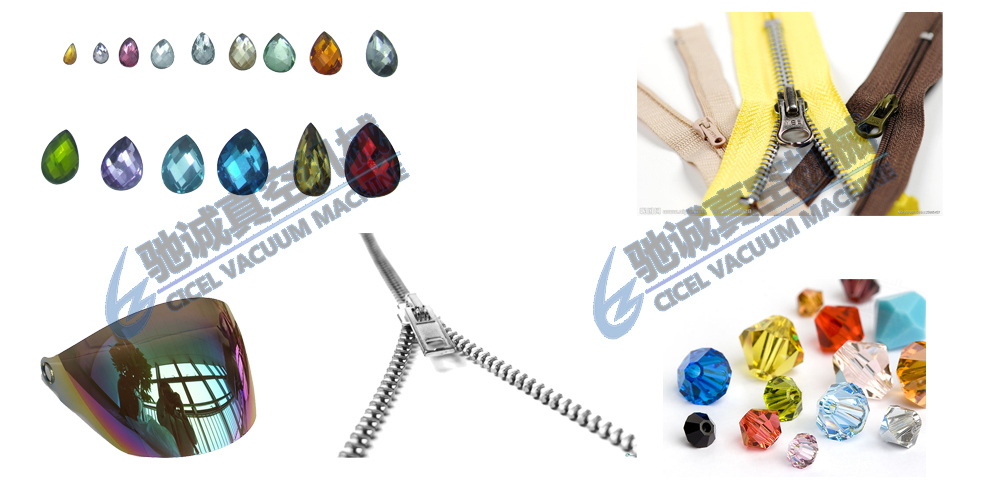
Our factory
 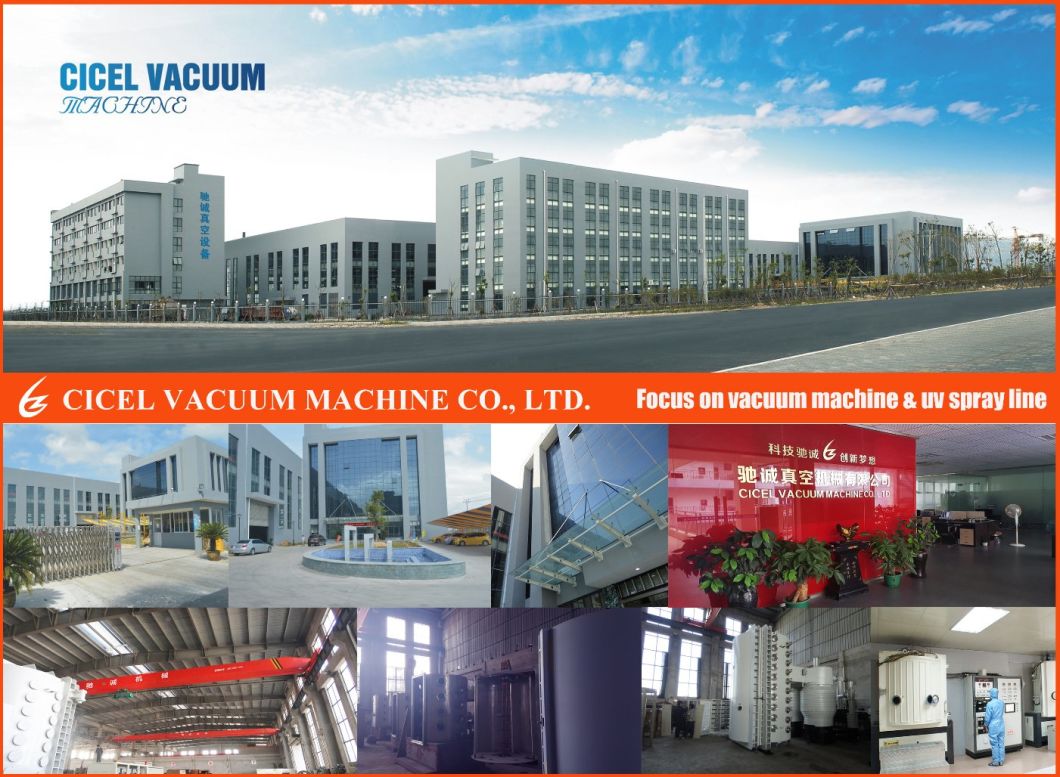
Our products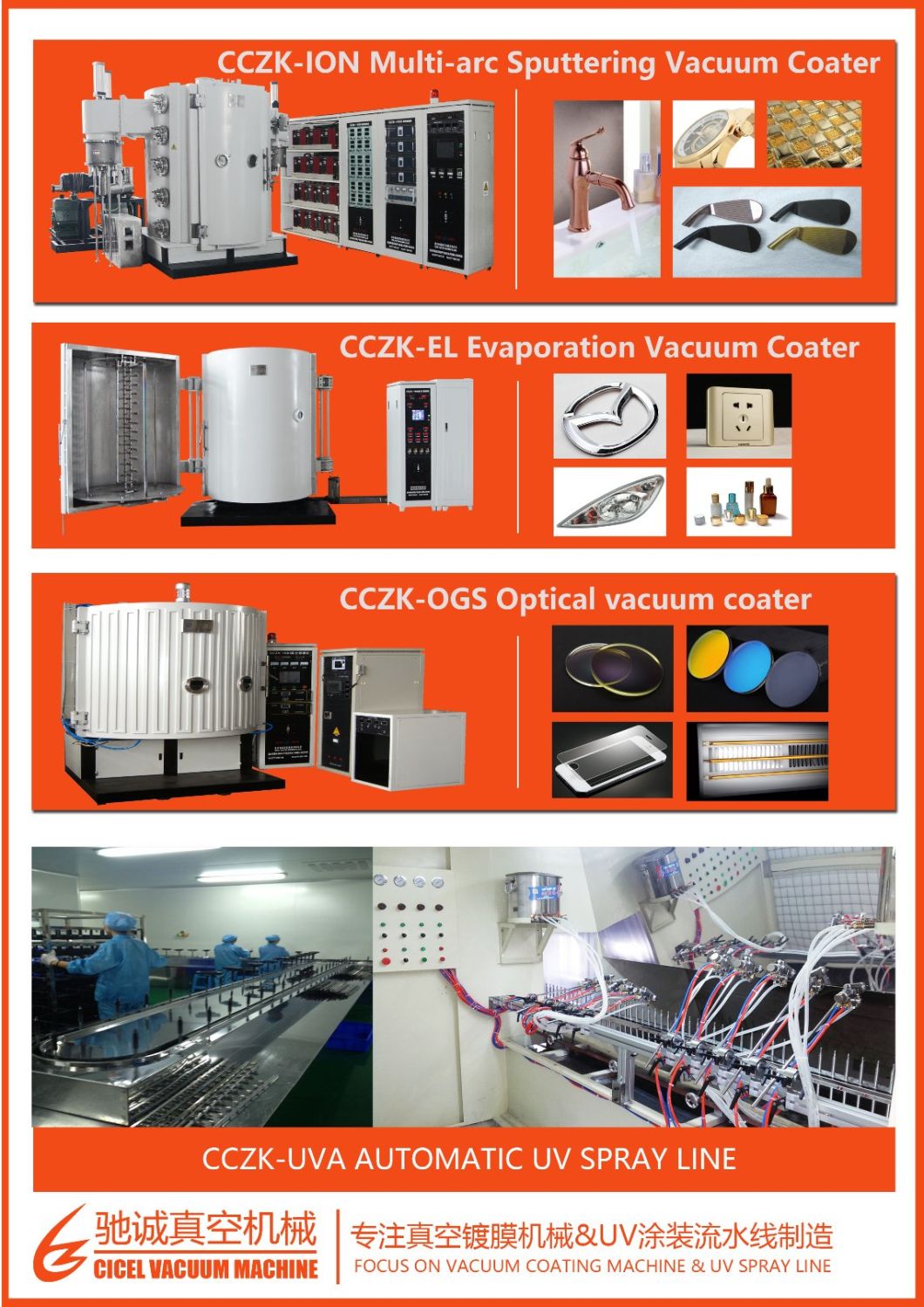
Â
Our customer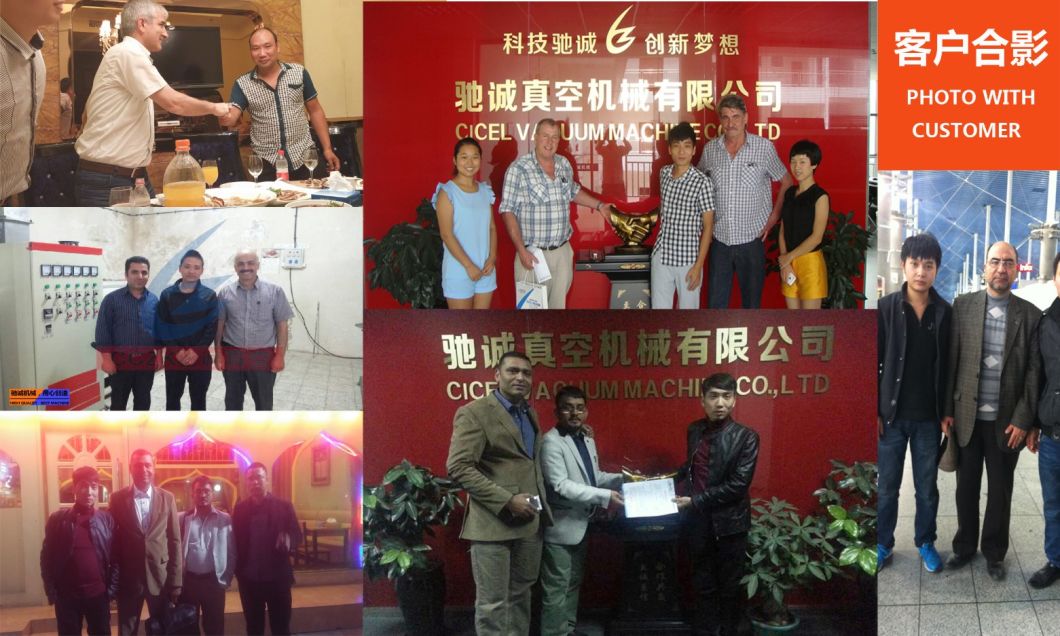
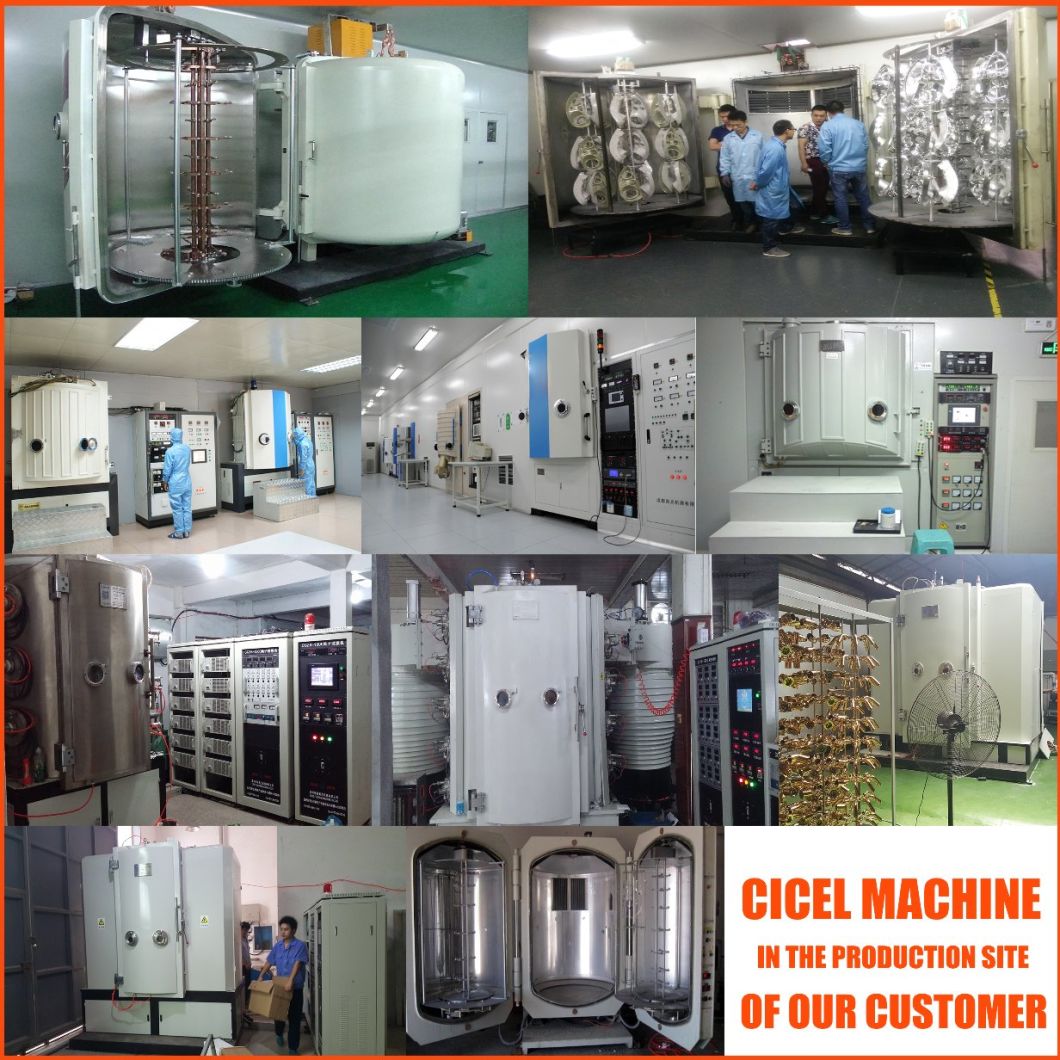
Delivery picture
 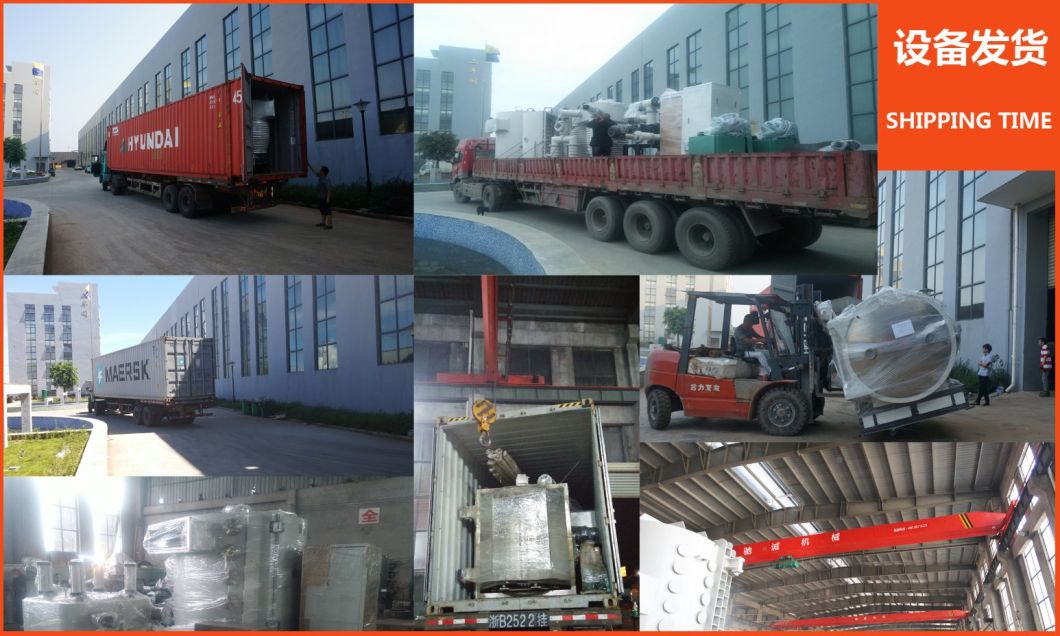
Support Service & Philosophy
At CICEL, we stand behind our systems with a dedicated service team who can diagnose and provide support when required, allowing you to maximize the return on your investment. Some of the parts and services that we offer include:
Our dedicated service team is available 24/7 to provide superior service and to meet the needs of our customers. From the initial installation and training to providing maintenance on existing equipment, we are here for you.
Contact us for more information on evaporation vacuum Coatings machine or to request a quote
The details of  Acrylic diamond vacuum coating machine
What is Vacuum metalizing?
§ Basically it is one form of Physical vapor deposition.
§ Essentially, this process was developed to imbue non-metal items with metallic properties
§ A process of combining metal with a non-metallic substrate through evaporation.
§ While there are many different metals to choose from when using this type of technology, aluminum is the most common due to its relatively low melting temperature and its very bright reflection.
§ Metalizing can be done to a part to give it mirror-like properties, or change its electrical properties, or to simply make it look more aesthetically pleasing.
§ Metal is vaporized inside a vacuum chamber and then it condenses back into solid metal on the item to be coated.
How Vacuum metalizing is done?
Process includes
§ Fabrication of custom tooling fixtures to hold and mask your parts during the vacuum metalizing and painting processes.
§ Base coating; For most decorative and reflective applications it is necessary to apply a specially formulated primer or basecoat to promote adhesion and to provide a smooth surface, assuring a high quality surface for the metalizing or finish paint steps.
§ Then vacuum metalizing itself
§ Top coating; only when it requires, topcoat is applied to enhance, moisture, abrasion, and chemical resistance.
Why Vacuum metalizing?
§ Vacuum metalizing has many uses including; EMI/RFI shielding, decorative chrome and metallic finishes, highly reflective coatings for light reflectors, heat shielding, vapor barriers, and more.
§ Metalizing can be done to a part to give it mirror-like properties, or change its electrical properties, or to simply make it look more aesthetically pleasing.
§ Highly reflective chrome like surface.
§ Low cost when compared to other plating methods.
§ Will not bury the detail in the part, but will show imperfections such as scratches and nicks.
§ Can be tinted for various colors: Gold, Brass, Copper, Red, Blue, Green and Black Chrome.
§ RF Shielding
Applications
Vacuum metallizing process is used for decorative metallic finishes, EMI/RFI Shielding, and Reflective coatings on plastic, glass, and metal substrates.
Â

Our factory
 
Our products
Â
Our customer

Delivery picture
 
Support Service & Philosophy
At CICEL, we stand behind our systems with a dedicated service team who can diagnose and provide support when required, allowing you to maximize the return on your investment. Some of the parts and services that we offer include:
Our dedicated service team is available 24/7 to provide superior service and to meet the needs of our customers. From the initial installation and training to providing maintenance on existing equipment, we are here for you.
Contact us for more information on evaporation vacuum Coatings machine or to request a quote
1. Sufficient anti-fracture strength;
2. Good abrasion resistance;
3. The smooth surface finish;
4. Excellent corrosion resistance, thermal fatigue, thermal cracking performance.
Tungsten carbide roller rings can working in bad conditions , small profile rolling (especially rebar rolling) process conditions is harsher than the high-speed wire rod, and therefore corresponds to the profile rolling ,tungsten carbide rollers recommend using high binder phase carbide.
Pre-finishing all vehicles roller should ensure its high toughness, strength, rigidity and thermal conductivity, followed before considering its wear resistance. When designing each vehicles roller, pre-finishing materials should choose carbide grades of Co, Co- Ni- Cr binder content is high (greater than or equal to 25wt%) , requiring an average WC grain size of coarse (5μm ~ 6μm), to obtain a higher shock toughness, proper strength and hardness. For the finishing of the roller movements, particularly the last two rollers of the finish rolling, which suffered load is small, and high relative velocity of the material to be pressed (80 m / min ~ 120 m / min). In this case, the wear resistance of the roller to be the most important requirements, and must ensure the strength , timpact toughness and hardness of a reasonable match, so the binder of Co / Ni content ratio and the average grain WC control of particle size and other factors must have greater control in front of different pre-finishing rolling roll.
According to the structure of tungsten carbide rollers, it can be divided into solid tungsten carbide roller and composite tungsten carbide roller. Solid tungsten carbide rollers have been widely used in pre-finishing and finishing stands high speed wire rod mill (including fixed reducing the rack, pinch roller rack). Composite tungsten carbide roller is made of cemented carbide and other materials, and it can be divided into tungsten carbide composite roll rings and solid tungsten carbide Composite Roller. Tungsten carbide composite roll rings mounted on the roller shaft; solid tungsten carbide composite roller will be directly cast in the roll axis to form a whole, a large load is applied to the rolling mill.
Tungsten carbide rollers produced by powder metallurgy method, the key to its process control is the chemical composition of the material and the mixture was prepared, pressed molding, sintering and deep processing and other preparation process parameters.
1. Preparation of starting material (WC focus quality): As the WC raw material and quality control of the use of different levels of quality may fluctuate, resulting in adverse effects on microstructure.
2. Preparation of the mixture: Mixture preparation is the key to the production process of the roller, the roller of failure modes - trachoma, mainly generated by this procedure.
3. Pressing: roller pressing is an important process of the roller mill.
4. Sintering: roller sintering is to determine the final quality of the roller production processes, use of advanced low-pressure sintering technology, HIP sintering technology can greatly improve the performance of roller.
5. Deep processing: deep processing rollers have a greater impact on the quality and accuracy of the roller surface.
Model NO.: CCZK-EL
Voltage: 380V or as Request
Chamber Size: Can Be Customized According to Details Requirement
Machine Structur: Vertical Double Door or Horizontal Single Door
Application: Car Lamps, Buttons, Cosmetic Caps, Christmas Ball
Coating Material: Aluminium Wire, Cooper Wire, Chrome Wire,etc
Coating Color: Silver /Cooper /Rainbow Color,etc
Coating Substrat: Glass,ABS,PVC,Resin,Metal
Package: Wooden Package or as Request
After Sales: Free Training & Oversease After Sales Available
Trademark: CICEL
Transport Package: Wooden Case Packing, 40FT
Origin: Zhejiang, China (Mainland)
HS Code: 8543300090
Model NO.: CCZK-EL
Voltage: 380V or as Request
Chamber Size: Can Be Customized According to Details Requirement
Machine Structur: Vertical Double Door or Horizontal Single Door
Application: Car Lamps, Buttons, Cosmetic Caps, Christmas Ball
Coating Material: Aluminium Wire, Cooper Wire, Chrome Wire,etc
Coating Color: Silver /Cooper /Rainbow Color,etc
Coating Substrat: Glass,ABS,PVC,Resin,Metal
Package: Wooden Package or as Request
After Sales: Free Training & Oversease After Sales Available
Trademark: CICEL
Transport Package: Wooden Case Packing, 40FT
Origin: Zhejiang, China (Mainland)
HS Code: 8543300090
The details of  Acrylic diamond vacuum coating machine